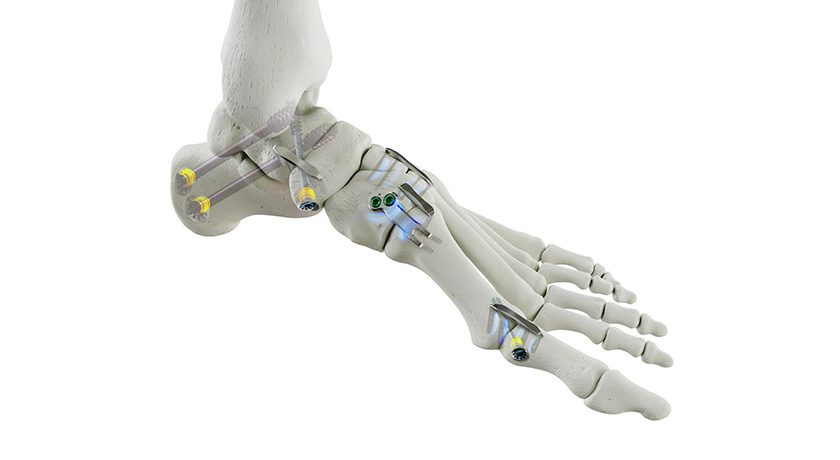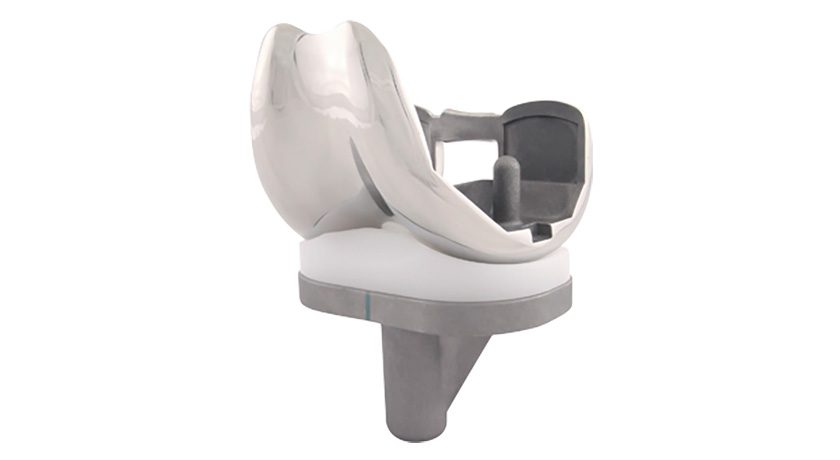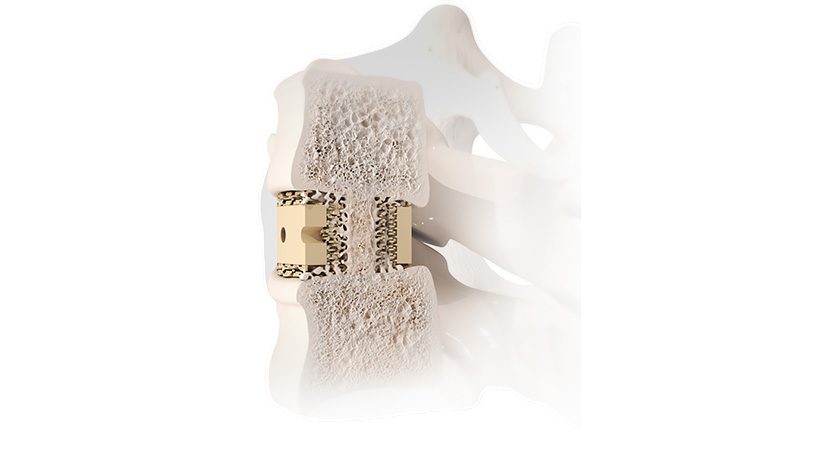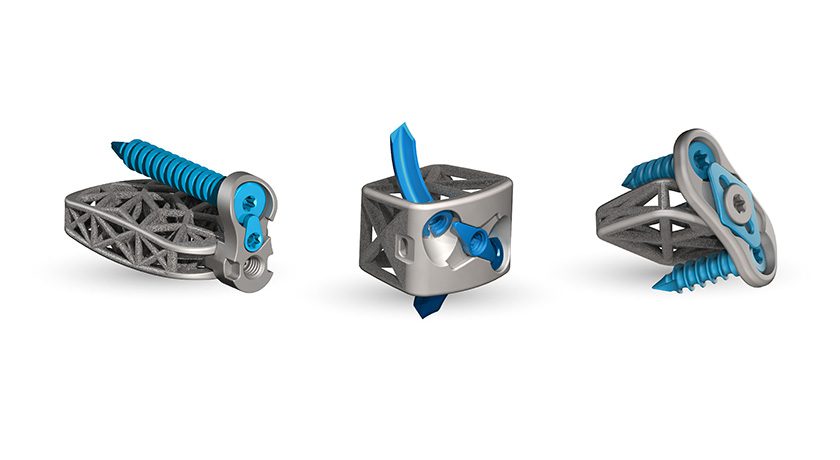

 Copy to clipboard
Copy to clipboard 
Medline UNITE received FDA 510(k) clearance to market the REFLEX HYBRID Nitinol Implant System.
While nitinol staples have steadily risen in popularity, static plates and screws are widely used in conjunction with staples to provide added fixation and stability. A key disadvantage of such hybrid constructs is the inherent neutralization of compression caused by the addition of static devices such as locking plates and cannulated screws. REFLEX HYBRID combines the compression of a nitinol staple with the stability of a locking plate, offering indication-specific implants designed for MTP fusions and Lapidus procedures. When paired with a cannulated screw with a Dynamic Disc, or a REFLEX nitinol staple, the construct provides dynamic biplanar compression and fixation for a fully dynamic construct.
The system’s inserter allows the surgeon to expand the implant’s legs for a streamlined technique. Because both of the implant’s legs are on the same side of the joint, the surgeon has the flexibility to adjust the placement of the implant, which is not possible with other nitinol solutions on the market.
“REFLEX HYBRID further demonstrates our commitment to offering innovative solutions for foot and ankle surgeons. The first to market product addresses gaps in the current competitive landscape, including offering indication specific designs, intraoperative compression, and intraoperative adjustment with a nitinol implant,” said Scott Goldstein, Vice Presicent of Product Management for Medline UNITE.
Source: Medline
Medline UNITE received FDA 510(k) clearance to market the REFLEX HYBRID Nitinol Implant System.
While nitinol staples have steadily risen in popularity, static plates and screws are widely used in conjunction with staples to provide added fixation and stability. A key disadvantage of such hybrid constructs is the inherent neutralization of...
Medline UNITE received FDA 510(k) clearance to market the REFLEX HYBRID Nitinol Implant System.
While nitinol staples have steadily risen in popularity, static plates and screws are widely used in conjunction with staples to provide added fixation and stability. A key disadvantage of such hybrid constructs is the inherent neutralization of compression caused by the addition of static devices such as locking plates and cannulated screws. REFLEX HYBRID combines the compression of a nitinol staple with the stability of a locking plate, offering indication-specific implants designed for MTP fusions and Lapidus procedures. When paired with a cannulated screw with a Dynamic Disc, or a REFLEX nitinol staple, the construct provides dynamic biplanar compression and fixation for a fully dynamic construct.
The system’s inserter allows the surgeon to expand the implant’s legs for a streamlined technique. Because both of the implant’s legs are on the same side of the joint, the surgeon has the flexibility to adjust the placement of the implant, which is not possible with other nitinol solutions on the market.
“REFLEX HYBRID further demonstrates our commitment to offering innovative solutions for foot and ankle surgeons. The first to market product addresses gaps in the current competitive landscape, including offering indication specific designs, intraoperative compression, and intraoperative adjustment with a nitinol implant,” said Scott Goldstein, Vice Presicent of Product Management for Medline UNITE.
Source: Medline

You are out of free articles for this month
Subscribe as a Guest for $0 and unlock a total of 5 articles per month.
You are out of five articles for this month
Subscribe as an Executive Member for access to unlimited articles, THE ORTHOPAEDIC INDUSTRY ANNUAL REPORT and more.
JV
Julie Vetalice is ORTHOWORLD's Editorial Assistant. She has covered the orthopedic industry for over 20 years, having joined the company in 1999.







